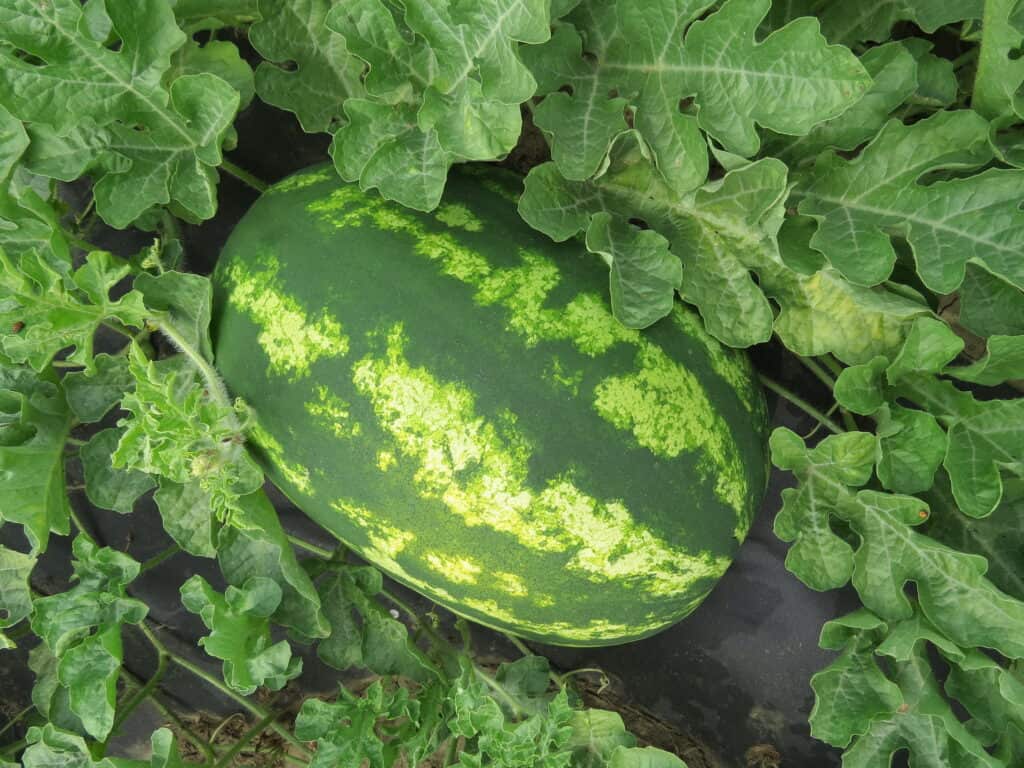With watermelons sprawling across my raised beds in Sonoma Valley each summer, I’ve faced every pest and pathogen—from aphid infestations that stunt young vines to devastating outbreaks of fusarium wilt. Over three decades, I’ve combined hands-on trial-and-error with insights from university extension research and integrated pest management studies to develop a holistic approach to protecting watermelon plants. In this guide, you’ll find detailed, organic-friendly strategies for preventing and controlling the most common pests (like cucumber beetles and aphids) and diseases (from anthracnose to powdery mildew), so you can grow vigorous vines and harvest the sweetest, healthiest melons possible.
Common Watermelon Pests and Organic Controls
| Pest | Damage | Organic Control Strategies |
|---|---|---|
| Aphids | Sap-sucking, leaf curling | Blast with a strong jet of water; introduce ladybugs; apply insecticidal soap or neem oil. |
| Spotted & striped cucumber beetles | Leaf feeding; vector bacterial wilt | Hand-pick daily; use yellow sticky traps; dust vines with kaolin clay; apply neem or horticultural oil. |
- Tip: Prompt removal of beetles is critical—each beetle can spread bacterial wilt, which kills vines rapidly.
Key Watermelon Diseases and Prevention
| Disease | Symptoms | Prevention & Control |
|---|---|---|
| Anthracnose | Dark leaf spots, wilting, fruit rot | Plant resistant varieties; rotate crops; remove and destroy infected vines. |
| Bacterial wilt | Sudden wilting, vine collapse | Control cucumber beetles; remove wilted vines immediately. |
| Fusarium wilt | Leaf yellowing, curling, stem browning | Amend soil with lime; ensure good drainage; avoid overwatering. |
| Gummy stem blight | Brown lesions on stems, leaf yellowing | Practice annual crop rotation; pull and trash infected plants. |
| Powdery & downy mildew | White or gray fungal growth on leaves | Spray weekly with compost tea or milk solution (1:9 skim milk to water); improve air circulation. |
Integrated Strategies
- Crop Rotation: Don’t plant cucurbits in the same spot more than once every three years to break disease cycles.
- Sanitation: Clear debris and old vines in fall. Fungal spores and bacteria overwinter on plant material.
- Resistant Varieties: Choose cultivars labeled for resistance to anthracnose, fusarium, and powdery mildew.
- Biological Allies: Encourage predatory insects—ladybugs, lacewings, and ground beetles—by planting insectary flowers (e.g., alyssum, dill).
- Soil Health: Maintain organic matter and balanced pH (6.0–6.8). Healthy soil microbiomes suppress many pathogens naturally.
By combining vigilant scouting, cultural practices, organic treatments, and resistant varieties, you can keep your watermelon patch vigorous and productive. Consistent attention to sanitation, rotation, and beneficial insects will minimize losses and maximize sweet, juicy harvests. Enjoy healthier vines—and bigger melons—all season long!

Watermelons Overview Post:
How to Grow Watermelons from Seed to Harvest: Ultimate Guide for Sweet, Juicy Success
Melons Overview: The Ultimate Guide to Growing Melons: From Planting to Harvest
Related Posts:
Starting Watermelons Right
- When and How to Start Watermelons: A Seed-Starting Guide
- Watermelon Temperature Needs: Warmth, Frost, and Growth Milestones
- Soil Prep and Mulching Tips for Healthy Watermelons
Planting & Space Planning
- How Much Space Do Watermelons Need?
- Growing Watermelons in Containers: Tips for Small Gardens
- Growing Watermelons Vertically: Tips for Small Gardens
- Companion Planting for Watermelons: What Works and What Doesn’t
Watermelon Care Through the Season
- Caring for Watermelon Plants Through the Season
- Watering Watermelons: How Much and How Often
- How to Feed Watermelons: Fertilizer Schedules and Organic Options
- Watermelon Pollination Tips: Helping Watermelons Set Fruit
Dealing with Pests and Diseases
Knowing When to Harvest
Choosing the Right Varieties
- Watermelon Varieties by Size: From Personal Melons to Giants
- Top Watermelon Varieties for Short Growing Seasons
- Best Long Vine Watermelons for Large Gardens
- Best Watermelon Varieties for Small Spaces (Bush & Short Vines)
- How to Grow Seedless Watermelons Successfully
Enjoying the Harvest
- Preserving Watermelons for Fresh Eating and Preservation
- Watermelon Flavor Pairings to Complement Your Harvest Table



